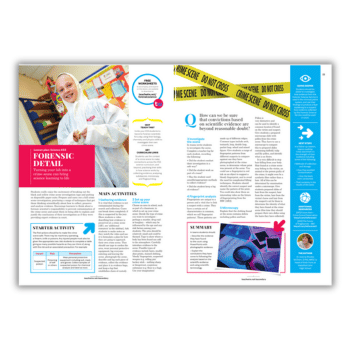Teaching science – 5 elements for engaging learning

In the first of a new series from the Science Museum Group, STEM engagement trainer, Katherine Davis, shares some tips from the organisation’s ‘Creating Engaging Learning Experiences’ training session for educators…

In a typical year, we welcome thousands of school visitors to our five museums.
Our aim is to engage and ignite their curiosity in STEM, which we do via our five elements of engagement – ‘REFLECT’, ‘HOOK’, ‘INFORM’, ‘ENABLE’ and ‘EXTEND’. Whether you’re teaching in the classroom or online, you can use these fundamental elements too.
1 | Take time to REFLECT
Before you start, take time to consider who you are teaching. How can you help everyone feel included and confident to get involved? What might help them connect with your content? Reflect on these questions throughout your planning process.
2 | Create a HOOK
Capture your students’ attention and interest at the start of your lesson. This could be something as simple as asking a thought- provoking question, or introducing your topic humorously or in an unexpected, surprising way that sparks curiosity.
3 | INFORM via different methods
Explore different ways of sharing your content. News articles, films, images, objects and pieces of music can really bring topics to life. Our own ‘Medicine Image Bank’ resource, for example, offers many images and discussion questions to help explore how medicine shapes our lives.
4 | ENABLE them to get involved
Give students the opportunity to do something active with your content first-hand. We’ll often use games, activities and experiments in our museums; using online tools such as Kahoot!, you could set your class the task of creating their own quizzes.
5 | EXTEND beyond the classroom
Encourage the learning experience to continue after the lesson, so that they can link what they’ve learnt in the classroom to their everyday lives. Ask a question or set a challenge that can be done at home or with friends. Our ‘How tall is that tree?’ resource makes an ideal extension to a trigonometry lesson.
Katherine Davis is a trainer for the Science Museum Group Academy, which offers free training and resources for teachers; for more information, visit sciencemuseum.org.uk/academy.








